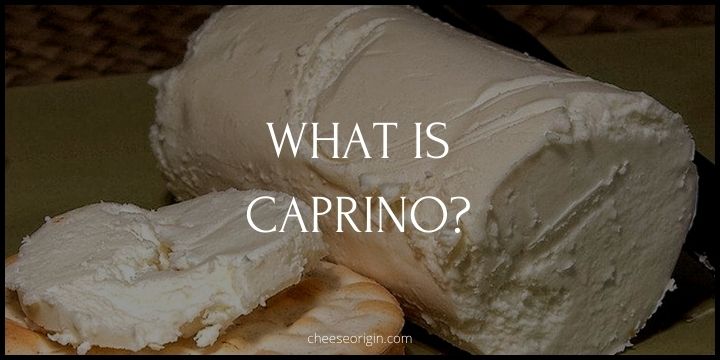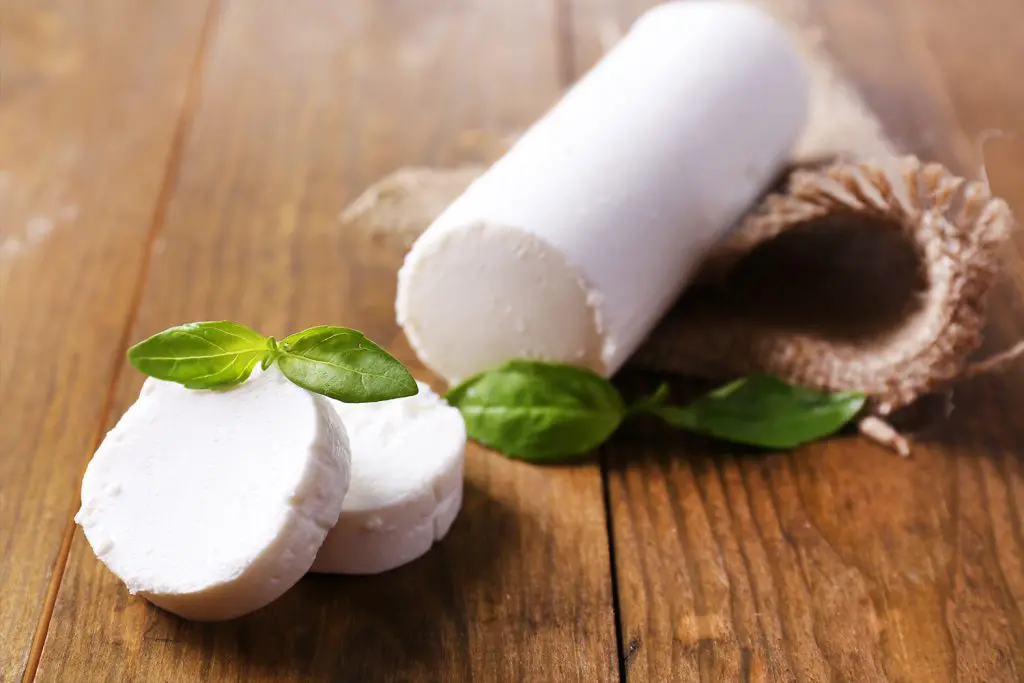What is Caprino? Italy’s Creamy Delight Explained

Welcome to the world of Italian cheeses, where each bite can transport you to the rolling hills and lush pastures of Italy. Among these culinary treasures is Caprino – a creamy gem that is as delightful as it is versatile. Derived from the Italian word ‘capra’, meaning goat, Caprino is a smooth, soft cheese primarily made from goat’s milk.
Its unique character and nuanced flavors have been savored in Italy for centuries. In this guide, we’ll unravel the delicious mystery that is Caprino, exploring its origins, taste profile and uses in gastronomy.
Quick Facts About Caprino
| Fact Category | Details |
|---|---|
| Origin | Italy |
| Milk Source | Goat |
| Texture | Soft, creamy |
| Color | White |
| Taste | Mild, tangy |
| Aging Time | Usually 3-10 days (fresh Caprino); up to several months for aged versions |
| Fat Content | Around 45-60% |
| Pairings | Fruit, honey, crusty bread, white wine |
| Shelf Life | Short (for fresh Caprino) |
| Rind | Edible, sometimes covered in herbs or ash |
| Production Method | Artisanal and industrial |
| Varieties | Fresh (Caprino fresco), Aged (Caprino stagionato) |
| Nutrition | High in protein, calcium, and vitamins |
| Culinary Uses | Salads, spreads, baking, dessert pairings |
| Availability | Year-round, but peak season in spring and summer |
| Storage | Refrigerate, wrap in wax paper |
| Popular Regions | Piedmont, Lombardy, Veneto |
| Affinities | Light-bodied wines, figs, olives, almonds |
| DOP Status | Some regional variations have DOP status (Protected Designation of Origin) |
What is Caprino?

Caprino is a captivating cheese that hails from the charming landscapes of Italy. Its name, derived from the Italian word ‘capra,’ meaning goat, gives a hint to its primary ingredient – fresh and wholesome goat’s milk. This exquisite dairy product is a testament to Italy’s rich culinary heritage, reflecting the country’s passion for creating high-quality, artisanal foods.
One of the unique aspects of Caprino is its versatility. It can be enjoyed in two distinct forms: fresh (Caprino fresco) and aged (Caprino stagionato). Fresh Caprino, often described as the epitome of creaminess, is a soft cheese with a delicate, mildly tangy flavor. It’s typically enjoyed within a few days of its production, making it a delightful treat for those who appreciate the gentle subtleties of fresh cheese.
On the other hand, aged Caprino is a testament to the transformative power of time. As the cheese matures, it develops a firmer texture and a more pronounced, robust flavor. The rind of aged Caprino is sometimes coated with herbs or ash, adding an extra layer of complexity to its taste profile.
Whether you’re savoring it on a cheese board alongside fruits and honey, spreading it on crusty bread, or using it as a key ingredient in your culinary creations, Caprino offers an authentic taste of Italy. It pairs wonderfully with light-bodied wines, making it a perfect companion for a relaxed evening.
But Caprino is more than just a cheese; it’s a celebration of Italy’s traditional cheesemaking methods. Each bite takes you on a gastronomic journey through Italy’s lush pastures and age-old traditions, making Caprino not just a cheese, but a truly Italian experience.
What Does Caprino Taste Like?
Caprino cheese has a unique, delightful taste that sets it apart from other cheeses. Made from goat’s milk, Caprino has a distinctive flavor profile that is both mild and tangy. Fresh Caprino, or Caprino fresco, is known for its creamy, buttery texture and subtly tart flavor that is reminiscent of fresh milk and yogurt.
As it ages, Caprino develops a more intense, robust flavor. Aged Caprino, or Caprino stagionato, often features nutty undertones and a savory complexity that can be quite tantalizing to the palate. The rind, which is sometimes coated in herbs or ash, can add additional flavors, contributing to the overall depth and richness of the cheese.
The taste of Caprino can also vary slightly depending on its region of production and the specific diet of the goats whose milk is used. This can result in nuanced variations, with some versions of the cheese featuring hints of herbal, grassy, or even slightly citrus notes. Regardless of its form or origin, Caprino offers a well-balanced blend of flavors that is sure to delight cheese lovers.
Caprino Tasting Notes
- Texture: Soft and creamy when fresh; firmer with age.
- Color: Pure white, indicative of its goat’s milk origin.
- Aroma: Mild, with a clean and fresh scent; becomes more pronounced with age.
- Taste: Subtly tart and milky when fresh; develops a robust, savory flavor as it ages.
- Aftertaste: Lingering tanginess, with possible hints of herbs or grass depending on the goats’ diet and cheese aging process.
- Rind: Edible, may be coated in ash or herbs which can add extra depth of flavor.
- Pairings: Complements light-bodied wines, fruits, honey, and crusty bread.
- Culinary Uses: Great for salads, spreads, baking, and dessert pairings.
10 Best Caprino Substitutes
| Cheese Name | Flavor Profile | Texture | Best Use |
|---|---|---|---|
| Chevre | Mild, slightly tangy | Soft, creamy | Spreads, salads |
| Feta | Salty, slightly tangy | Crumbly, grainy | Salads, Mediterranean dishes |
| Ricotta | Mild, slightly sweet | Soft, creamy | Pasta dishes, desserts |
| Boursin | Mild, herb-infused | Soft, crumbly | Spreads, appetizers |
| Camembert | Earthy, mushroomy | Soft, runny when ripe | Cheese boards, baked dishes |
| Brie | Mild, buttery | Soft, creamy | Cheese boards, baked dishes |
| Roquefort | Strong, tangy | Crumbly, dense | Cheese boards, salads |
| Gorgonzola | Sharp, slightly spicy | Creamy, crumbly | Pizza, pasta dishes |
| Crottin de Chavignol | Nutty, intense | Firm when aged, creamy when fresh | Cheese boards, grilled dishes |
| Sainte Maure de Touraine | Nutty, full-flavored | Soft, creamy | Cheese boards, baked dishes |
What Pairs Well With Caprino?

Food that goes well with Caprino:
| Food Category | Foods That Pair Well |
|---|---|
| Fruits | Apples, pears, figs, grapes, peaches |
| Vegetables | Tomatoes, bell peppers, olives, spinach |
| Breads/Crackers | Baguettes, whole grain bread, water crackers, rye crackers |
| Meats | Prosciutto, salami, smoked salmon |
| Nuts/Seeds | Almonds, walnuts, pine nuts, pumpkin seeds |
| Spreads/Jams | Fig jam, apricot preserve, honey |
| Pasta/Rice | Linguine, penne, risotto |
| Herbs/Spices | Basil, thyme, rosemary, black pepper |
| Desserts | Dark chocolate, biscotti, berry tart |
Also read: What Fruit Goes on a Charcuterie Board?
Beverage that goes well with Caprino:
| Beverage Category | Beverages That Pair Well |
|---|---|
| White Wines | Sauvignon Blanc, Pinot Grigio, Chardonnay |
| Red Wines | Pinot Noir, Merlot |
| Beers | Belgian-style Ale, Wheat Beer, Pilsners |
| Non-Alcoholic Drinks | Apple cider, Grape juice, Pear nectar |
| Sparkling Wines | Prosecco, Champagne |
| Dessert Wines | Moscato d’Asti, Port |
| Spirits | Gin, Vodka |
Also read: Best Wine and Cheese Pairings: The Ultimate Guide
Also read:
- What is Blue Earth Brie? A Taste of Minnesota’s Finest Artisanal Cheese
- What is Tomme Crayeuse? The Chalky Delight from Savoie
- What is Chloro Cheese? The Taste of Santorini
- 5 Most Popular Cheeses Originated in Portugal
- 10 Most Popular Goat Milk Cheeses in the World
- What is Majorero? Spain’s Nutty Cheese Treasure
- What is Tetilla Cheese? Galicia’s Signature Cheese





